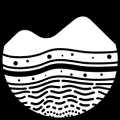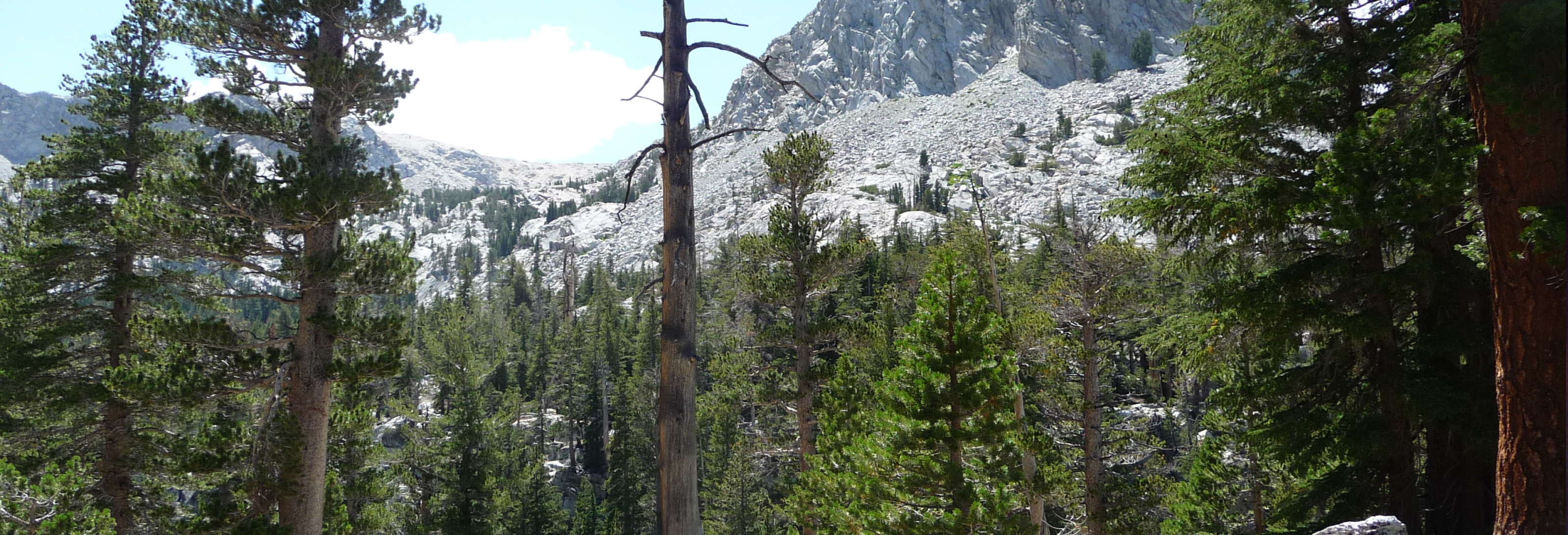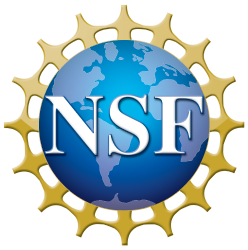Web Services
Setting Up An Account
Setting up a SESAR User Account
To register samples in SESAR owned by an institution or lab group follow the steps below. If your institution or lab group wants to use web services, skip to the “Accessing SESAR’s web services” section.
The Lead Curator/P.I. must:
- Create an ORCiD account if they do not have one already.
- Login to MySESAR with their ORCiD and create a personal account.
- Register an institution/lab specific user code.
- Share user code permissions with all other curators/lab group members via their ORCiD.
All other Curators/lab group members must:
- Create an ORCiD account if they do not have one already.
- Login to MySESAR with their ORCiD and create personal accounts.
- Create a personal user code only if they plan on registering personal samples.
Once all curators/lab group members have access to the institution/lab group user code, samples can be registered for the institution/lab group from each individuals personal MySESAR account.
Accessing SESAR's web services
If your institution/lab group will be using SESAR’s Web Services you must have a GeoPass account associated with your institution/lab group’s MySESAR account. Steps are as follows:
- Create a GeoPass Account with an institution email (not personal email).
- Login to MySESAR.
- Select a User Code for your account.
- Submit a request to use web services with this form.
Members of your institution’s repository can share the login information for the repository’s MySESAR account. If the main curator of PI of the lab group changes, the owner of the user code can be transferred.
Selecting A User Code
User Codes are a tool that researchers can use to aid in documentation and curation of their samples. MySESAR supports multiple User Codes for each user. User Codes begin with IE and are followed by 3 letters and/or numbers of your choosing (IEXXX0001). Common User Codes are initials or abbreviations of a large project.
When you create a MySESAR User Code it is important to keep in mind what samples will be registered with that User Code. For example, Unique User Codes can be used to represent:
- Different institutional collections
- Different projects or grants
- Different field sessions
Sharing User Codes between Curators
If your institution has multiple curators who will manage and upload sample metadata, we recommend that the lead curator generates the institution’s user code and then grants the other curators permission to Create, Read, Edit, and Delete samples with that user code. User Codes belong to the user account which created the code and only the owner of a User Code can grant access permissions to other users. If the lead curator changes, it is possible to transfer ownership of the owner of the user code to another account.
Transferring Ownership
To transfer the ownership of a user code the original owner of the user code should email info@geosamples.org with their institutional email account and should CC the recipient of the user code on the email.
SESAR as a Catalog
If your institution already maintains a catalog for your samples SESAR provides a mechanism for your samples to be discovered through our global digital index. This discoverability of your samples can lead to valuable collaborations with visiting researchers or peer institutions. SESAR also provides a way for your institution’s related URLs to be included in the SESAR sample metadata, directing users to your institution’s website and sample metadata profile page. If SESAR is not your primary sample metadata management tool, it is important to update SESAR² sample metadata entries as metadata is changed locally.
How to make your samples Discoverable and Shareable
The best way to make your samples discoverable within the SESAR Catalog is providing as much sample metadata as possible. Important fields to include are location, sample type, classification, and archive.
Samples can also be made more discoverable by listing sample IGSNs in manuscripts. As an institution, you should ask researchers who use your samples to include the sample’s IGSN in any related manuscripts. This will give credit and exposure to the institution for housing the samples. Publishers can link IGSNs to their sample metadata profile pages so readers can see all sample metadata. (AGU, GSA, Wiley, Elsevier, Copernicus) Additionally, you should request researchers to provide DOIs of publications that used samples from your institution. The metadata profile of the sample should be updated to include the DOI to increase discoverability.
Registration Workflows
Who should register samples
As an institution, you should register all samples (including legacy samples and new acquisitions) that are housed within your repository. If a sample is sub-sampled by a visiting researcher there are two possible workflows to follow. In both instances, the sub-sample should be registered as soon as it is created.
If the sub-sample will remain in the ownership of the visiting researcher:
- The visiting researcher should register the sub-sample.
- The visiting researcher should include the IGSN of the sample that was sub-sampled as the ‘Parent IGSN’ field of the newly registered sub-sample.
- The visiting researcher should cite the IGSN in all resulting publications.
If the sub-sample will be returned to the repository, the repository should register the sub-sample and include the IGSN of the sample that was sub-sampled as the ‘Parent IGSN’ field of the newly registered sub-sample.
Transferring Ownership of Samples
If a researcher is donating samples to your institution’s repository and the samples have already been registered using the researchers User Code, the researcher should use the “Transfer Ownership” tab of MySESAR to transfer ownership of the specific samples to the institution.
If the samples have not been registered with IGSNs, your institution should register the samples using your institution’s User Code.
Metadata Submission and IGSN Registration Workflow
The workflow for registering sample metadata is unique to your institution’s workflow and needs. SESAR recommends that institutions review their current workflow structure and identify locations in their workflow where samples are introduced, shared and stored. SESAR also highlights the work of ESS DIVE as an example for effective workflow that incorporates SESAR.
Registering samples with web Services
SESAR provides web services that allow fast registration of large numbers of samples. Access to SESAR’s web services is limited to ensure quality of sample metadata. If you are interested in using web services please see our technical documentation (SESAR GitHub) and ensure that you have a GeoPass Account.
If your institution did not a MySESAR account prior to SESAR v8.0 (22 July 2021) you must apply for access to SESAR²’s web services. When you request access to SESAR²’s web services, a curator will be in contact to discuss the metadata mapping. The form to request access for SESAR²’s web services can be found in our technical documentation (SESAR² GitHub).
Some of the uses of SESAR’s web services are:
Pre registering samples
If your institution supports field work, web services can provide a fast way to pre-register samples before field work takes place. The pre-registered IGSNs and SESAR’s label printing allows your institution to curate samples from the moment they are collected. Sample metadata can then be added after the field work via web services.
Updating Sample Metadata
SESAR’s web services allow institutions to update or add sample metadata. This can be used to add metadata to pre-registered IGSNs after field work has occurred or adding geologic age or classification after analysis has taken place. This web service can also be used to update metadata that may have been incorrect or has become outdated over time.
The update web service also provides a way for institutions to add multiple URLs to a sample’s metadata page. This can include adding publication DOIs after visiting researchers have used institutional samples in their work. Up to 5 URLs can be added to a sample’s metadata field, but in order to add multiple URLs they must be added one at a time (one URL per web service request).
Hierarchical Sample Relationships
Many objects that are sampled from the Earth yield subsamples. For example, sediment cores may be sampled at regular intervals creating hundreds of individual samples from one core. This relation among samples is considered a parent-child relationship in the world of data management: sub-samples are children of a parent sample. Subsamples can be sampled themselves, leading to complex hierarchies.
SESAR has been designed to record the relationship between samples and sub-samples. Subsamples have their own entry in the SESAR registry and have independent IGSNs. The parent-child relationship is established by recording the IGSN of the parent in the child metadata profile. A parent sample must be registered with an IGSN before it can be listed as the parent of any child samples.
By adding a ‘Parent IGSN’ to a sample, the metadata profile page of the newly registered sample will show that it is a sub-sample of the sample that was listed in the ‘Parent IGSN’ field. The metadata profile page will also show all other samples (siblings) that share the sample parent sample. The metadata profile page of the sample whose IGSN was listed in the ‘Parent IGSN’ of the newly registered sample will also show that the newly registered sample is a sub-sample (child) of it.
Labeling Samples
The IGSN can be used as a label for samples that allows for unambiguous naming and persistent access to information about the sample. MySESAR provides label printing services that contain the sample name, IGSN, QR code linking to the sample metadata profile page and customizable additional metadata fields. Information on how to print labels can be found here.
Crediting SESAR
Please, instruct visiting researchers to acknowledge SESAR as the curation database for your samples in your FAIR and accessible data statement of your publication. An example statement that credits SESAR is as follows:
“To ensure the accessibility and discoverability of the samples used in this research, and to align with the National Science Foundation’s guidelines of effective data practices, all samples used in this study have been registered with IGSN Global Sample Numbers through the System for Earth Sample Registration (SESAR). SESAR is maintained by the GeoInformatics Research Group of the Lamont-Doherty Earth Observatory. http://geosamples.org/ Accessed DAY MONTH YEAR”
Citing IGSN
Citing IGSNs in Publications
SESAR asks its users to include IGSNs in their manuscripts. This allows publishers to link the IGSN sample metadata profile pages to the manuscript. Tagging IGSNs in manuscripts aligns with the National Science Foundations commitment to FAIR data as well as publishers such as AGU, GSA, Wiley, Elsevier, Copernicus.
Use the following syntax to tag an IGSN
IGSN: <SSH000SUA>
IGSN: <10.58052/SHH00UA>*
In the published manuscript the IGSN may look like :
IGSN:http://doi.org/10.58052/SSH000SUA (full display)*
IGSN:10.58052/SSH000SUA (short display)*
*Starting January 2023, samples registered in SESAR² follows the DOI format. This includes the addition of a prefix in addition to the syntax. The SESAR² shared prefix is 10.58052.
Below is an example of a published manuscript with IGSNs
Dere, A. L., T. S. White, R. H. April, B. Reynolds, T. E. Miller, E. P. Knapp, L. D. McKay, and S. L. Brantley (2013), Climate dependence of feldspar weathering in shale soils along a latitudinal gradient, Geochimica et Cosmochimica Acta, 122, 101-126, http://dx.doi.org/10.1016/j.gca.2013.08.001.
SESAR In Grant Proposals
The National Science Foundation allows for researchers to budget expenses for the preparation of research data for distribution. (NSF Proposal and Award Policies and Procedures Guide Chapter II.C.2.g.(vi).b) Registering your institution’s samples within SESAR allows your samples to be discovered beyond your catalog and contributes to the National Science Foundations mission of open access to data.
Here is some language you can incorporate into your grant proposals for the inclusion of registering and managing samples with SESAR.
“Samples will be registered in SESAR with International GeoSampling Numbers to ensure the preservation of sample metadata and to promote open access of data. Registering the samples in SESAR also provides an easy way to share sample metadata with my collaborators and contributes to a culture of sample sharing, which can help me discover new, relevant samples and promote new collaborations.”
External Resources
ESIP Physical Samples Cluster
The ESIP Physical samples cluster is a community that supports curation of samples in the earth, space and environmental sciences. ESIP promotes the curation and maintenance of sample collections and their metadata. for more information about ESIP see their website.


